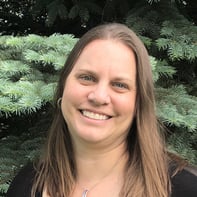Whether you’re almost done or just starting, our experts have some tips to help you finish your inventory and get ready for next steps.
If you’ve been dreaming about lead and copper, you’re not alone. Many are focused on meeting the EPA’s Lead and Copper Rule Revisions (LCRR), which require communities with public water systems to complete their lead service line (LSL) inventories by October 16, 2024. The proposed Lead and Copper Rule Improvements (LCRI) will add more provisions to follow once they are finalized. With many rules to consider and a fast-approaching deadline, here are a few reminders to help you tackle this process.
Check your deadline
While October 16, 2024, is the EPA’s deadline for LSL inventories, your state might have an earlier due date. For example:
- Minnesota: Communities using funding made available through the Minnesota Department of Health (MDH) must report their findings by July 15, 2024. Even those not using the funding program must file by August 15, 2024.
- Iowa: Communities need to meet the national deadline of October 16, 2024.
These differences highlight why it’s important to know your state’s requirements.
Work with an experienced team
The LSL inventory process can be overwhelming – that’s why working with a professional team is crucial. This will help meet the deadline, ensure accuracy, and set your community up for success. Here’s a look at a few of the processes SEH has used to support communities in completing their inventories and following regulations:
- Reviewing construction records: City and county construction records are reviewed for all buildings, noting the records used to identify the service line's material. Knowing when lead lines were banned saves time. For example, Minnesota banned lead lines in 1985, while national lead-free requirements were established after June of 1986 and implemented starting June 19, 1988.
- Reaching out to property owners: If records don’t show if a service line contains lead, residents are contacted by letter and given the option to self-report their service line or schedule an appointment with a field technician for an inspection. Self-reporting is offered through an online survey, which also provides guidance on how to identify various service line materials and upload photos as documentation.
- Integrating GIS: Inventory data can be collected using Geographic Information System (GIS) software with equipment as simple as cell phone applications. The data is stored in a GIS database or map to help with maintaining the inventory in the future.
- Maintaining Communication: If a service line is found to have lead, labeled as galvanized requiring replacement (GRR), or classified as “unknown,” the property owner is notified within 30 days. This notification is provided annually until the line is reclassified or replaced.
- Submitting the Data: Once the inventory data is recorded in the GIS program, it is exported to a spreadsheet for secure submission. Some states may require GIS data submission as well.
Be ready for updates and next steps
While the October 16, 2024, deadline is near, more information about LSL replacement will be made available, including LCRI finalization, funding opportunities, and deadlines. For example: The replacement plan, currently required with the inventory by October 16, 2024, may be delayed, giving more time to focus on inventories and develop replacement plans.
Even if you haven’t started your inventory, there’s no need to panic. For more in-depth information on this topic, including funding sources and additional resources, please see our related content: Get the Lead Out: What You Need to Know About the Lead and Copper Rule Revisions.
When all is said and done, safe drinking water is well worth the effort. And, if you could use a little help with that effort, contact our team.
About the Experts

Simon McCormack, PE*, has in-depth knowledge of water system engineering from design to operation. He is well-informed about the SDWA, Minnesota Plumbing Code, Minnesota Well Code, and procedures for enforcing these standards. In addition to engineering design and operation, Simon is well-versed in hydraulic modeling and integrating modeling software with GIS systems.
*Registered professional engineer in MN

Katie Kinsey, PE*, is a project engineer with extensive experience in the water industry managing infrastructure projects that includes distribution main and transmission main planning, design, and construction, water distribution system improvement studies, hydraulic modeling, source water well improvements, and water treatment plant improvements. She is experienced in project management, planning, funding procurement, preparation of construction documents, bidding services, and construction observation and administration.
*Registered professional engineer in IA, NE, MN, WI, MO, KS, SD, VA

Kevin Young, PE*, is a dedicated water engineer with experience managing projects including water treatment plant construction and rehabilitation, ground water and surface water supply improvements, water system planning, and hydraulic modeling. As a licensed water operator and professional engineer, Kevin combines technical skills with practical experience to deliver complex projects in both small towns and large metropolitan areas.
*Registered professional engineer in MN and VA


